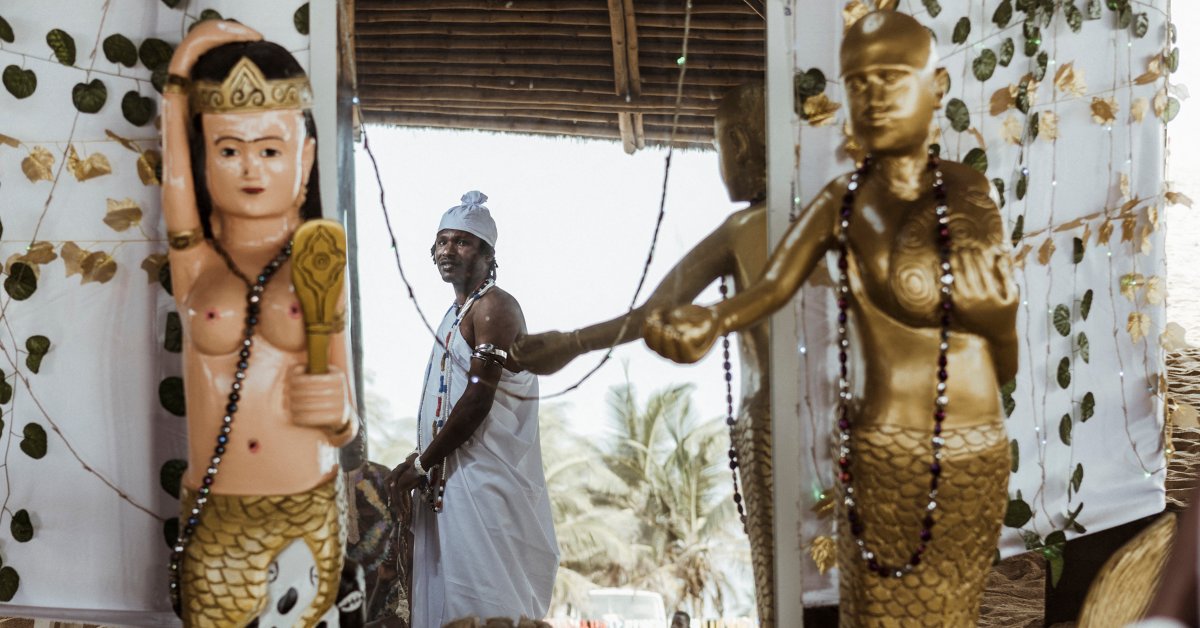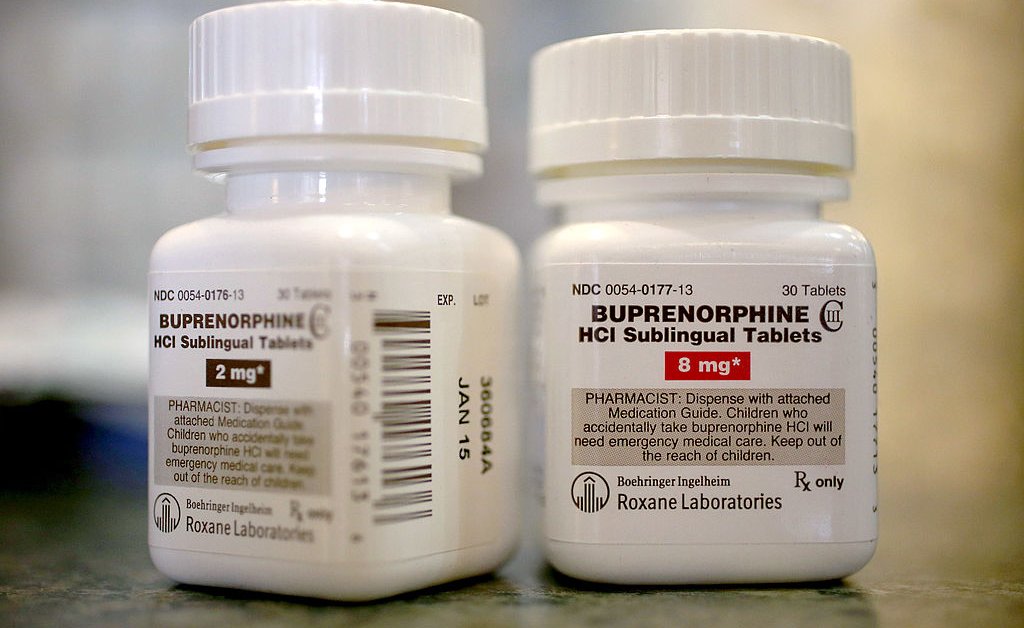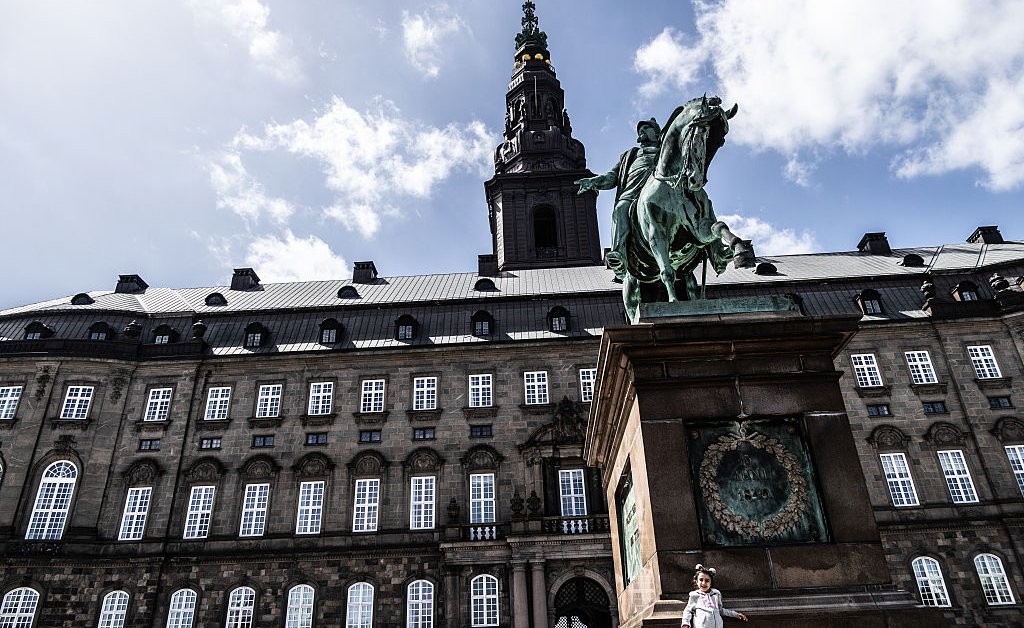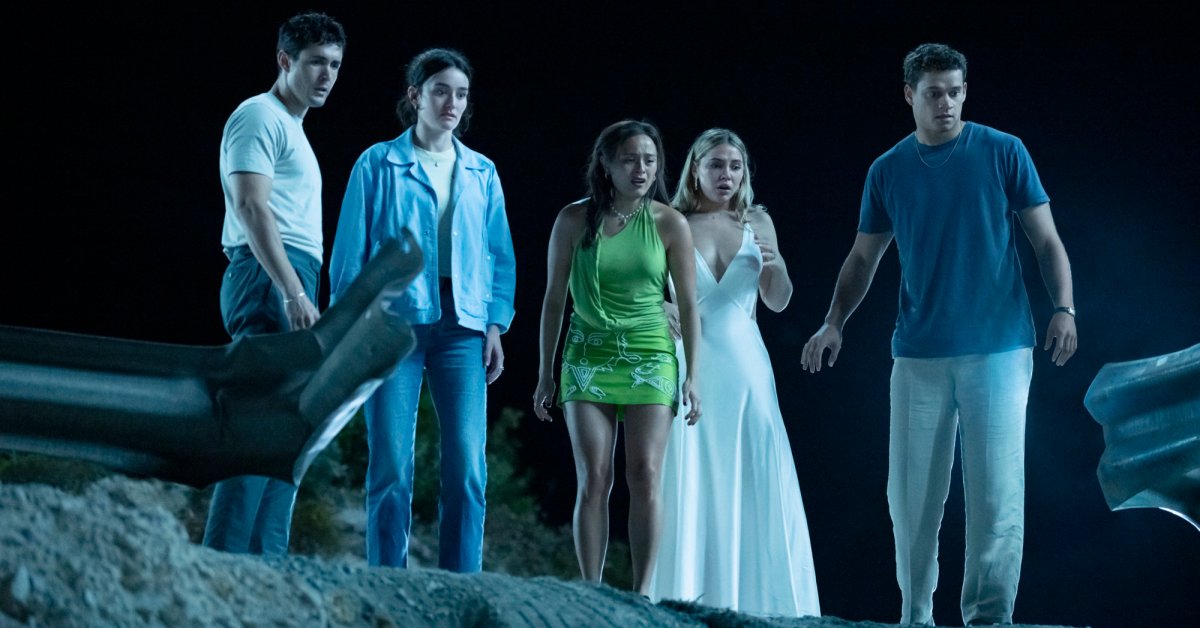In the summer, many Americans daydream about mermaids. Thousands sojourn to New York City’s Coney Island for the Annual Mermaid Parade, decked in aquatic apparel. Parents bundle their children together for day trips to state parks, seeking live mermaid shows performed by acrobatic swimmers like the Mermaids of Weeki Wachee Springs in Florida. And many try to summon the mermaid’s underwater world with wet, wavy hair as if tossed by the ocean, dark makeup that recalls the siren’s sultry nature, sequins that shimmer and snatch light like fish scales, all while donning sea-themed accessories—a fashion trend called “mermaidcore.”
This fad, our national mermaid obsession, began in the 1920s, was revived in 2023, and is now resurgent in 2025. In popular culture, mermaids offer us a chance to be sexy and edgy, to let our problems slip away as we dip our toes in luxury. But there’s another side to our American mermaid lore. In African American history, mermaids have long been a symbol of collective rebellion. This history carries a vital lesson: escapism can offer more than respite; it can also generate new ways to challenge social oppression.
For centuries, Black enslaved communities invoked mermaids as they organized rebellions against slavery. From the 16th century, kidnapped West African ancestors brought water spirits across the Atlantic and introduced them to the New World: the simbi from the Congo, the orisha (like Oshun) from Nigeria, or the vodun (like Ayida Wedo) from the Fon. In West African lore, these water spirits were worshiped for healing and protection, and they took many forms, from snakes to fish-tailed women.
Read More: Disney Projects $118 Million Opening for ‘Little Mermaid’ Remake
Slavers also used the image of the mermaid, seeing it as a cultural patron of their slaving enterprise, a wraith that delivered the “amazing grace” of safe passage across treacherous seas. But to the enslaved Africans transported on these ships, that mermaid was a symbol of righteous rebellion and holy mutinies. This is because West Africans often saw water spirits as arbiters of justice—they preserved social harmony, and if that harmony was disturbed by human avarice, watery destruction was sure to follow.
By the 19th century, after thousands of coercive journeys across the Atlantic, West Africans had absorbed European images of mermaids—from ship figureheads to a mass-produced chromolithograph of a dark-skinned female Samoan snake charmer, Maladamatjaute—and remade the Western mythic creature into the mermaid, Mami Wata, Mother of the waters.
In the United States, Mami Wata showed up in many ways. This included the “cymbee” in South Carolina and Georgia’s lowcountry or “Mama Jo” in their Sea Islands, as the loas Erzulie and Lasirèn in Louisiana Voodoo circles, as anonymous mermaids in tales swapped along the lower Mississippi Valley. Mami Wata was invoked in Black communities by rituals that ensured safety, provided healing, and sowed self-worth. She was summoned by heart symbols drawn in cornmeal during Voodoo rituals; mermaid figurines made of wood and cloth, beads and ribbons; snake motifs and flower patterns sown into patchwork quilts made by enslaved women along with the handmade indigo dye they used to first craft the nation’s blue jeans; springs or wells where fresh water was drawn for healing medicines and rituals.
The women who worshiped Mami Wata were often conjure women—spiritual leaders in enslaved communities who could heal or poison with their extensive botanical knowledge, who mediated conflicts, and who provided reproductive care (including abortifacients). In the antebellum years and during Reconstruction, conjure women told mermaid stories that empowered women and girls, where the mermaids’ struggles for freedom mirrored their own experiences of domestic abuse or reproductive maltreatment during slavery. And they were often at the center of mermaid-inspired revolts.
Read More: Once Upon a Time, Ursula Was a Drag Queen
Consider the 19th century Charleston “Mermaid Riot” where Black people rose up to protest slavery. Enslaved and free African Americans stormed a local white male pharmacist’s office, where a mermaid was said to be held captive. They demanded that the mermaid be released, seeing her freedom as linked to their own. They had been galvanized by a local conjure woman who used the captive mermaid story to protest the horrible conditions of enslavement—the forced “breeding” enslaved women and subsequent separation from their children at the auction block; the heinous experimentation on Black women by slave doctors, like South Carolinian James Marion Sims, named the father of gynecology; the infamous “night doctors” who stole Black corpses for medical research.

The most famous conjure woman in the 19th century, Marie Laveau (1801-1881), worshiped Mami Wata in her Voodoo practice, which blended Roman Catholicism, Yoruba traditions, and Haitian Vodou for healing, protection, comfort, and even revenge. A free Black woman of African, European, and Indigenous descent living in New Orleans, Marie Laveau was reported to be “most powerful woman there is” by the formerly enslaved in their interviews for the Federal Writer’s Project. In Voodoo lore, Marie Laveau was heavily associated with mermaids. The former enslaved told stories of Laveau dancing with snakes and fish, her movements blending her feminine form with the aquatic. There were even stories of her descending into Lake Pontchartrain for nine days on end, only to resurface from the water like a mermaid on St. John’s Eve, a central Voodoo holiday.
But her mermaid accoutrement was not an evasion of reality; instead, it put her at the heart of the nation’s biggest conflict: slavery. The mermaid figurine she kept on her shrine, a representation of Mami Wata, secured her status as Queen of the Voodoos. And from that position, she was empowered to breed social revolt. At her secret Voodoo meetings, she provided spiritual amulets that gave the enslaved the courage to run away, spells that gave battered wives a way to retaliate, and a space for people of all classes to mingle and plot slave rebellions. To contain this massive threat to the ruling class, the police raided Marie Laveau’s Voodoo meetings in 1850 and confiscated her mermaid figurine.
Centuries of spiritual repression like this is one reason why so little is known about Black mermaids like Mami Wata. Today, many Americans cannot even fathom the idea of a Black mermaid, as evidenced by the racist pushback against Disney for casting a Black woman, singer Halle Bailey, as Ariel in its 2023 live-action remake of The Little Mermaid. But Black mermaids in the United States have long haunted American history, their siren song a clarion call for rebellion against oppression.
Lindsey Stewart, Associate Professor of Philosophy, is the author of The Conjuring of America: Mojos, Mermaids, Medicine, and 400 Years of Black Women’s Magic.
Made by History takes readers beyond the headlines with articles written and edited by professional historians. Learn more about Made by History at TIME here. Opinions expressed do not necessarily reflect the views of TIME editors.








